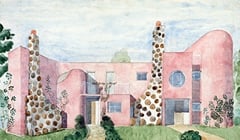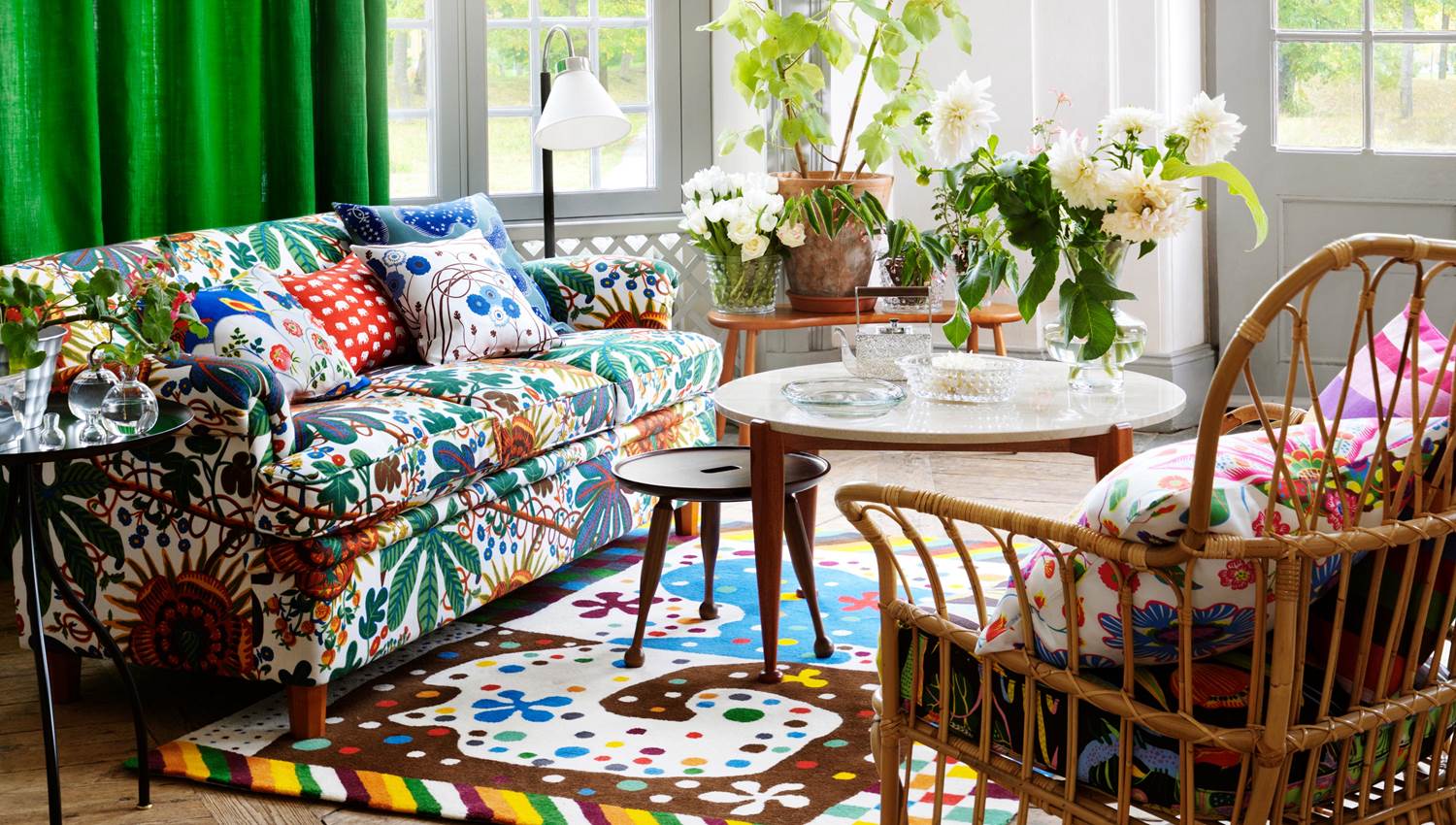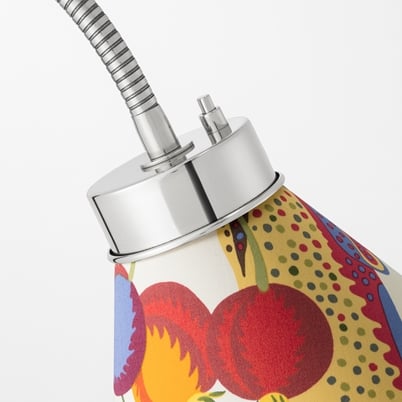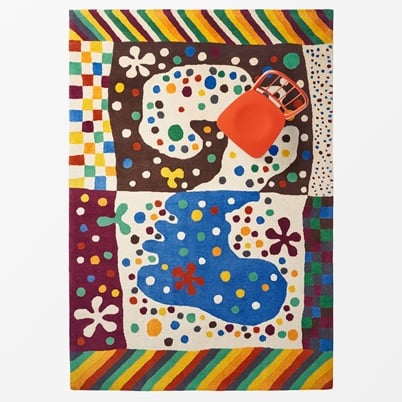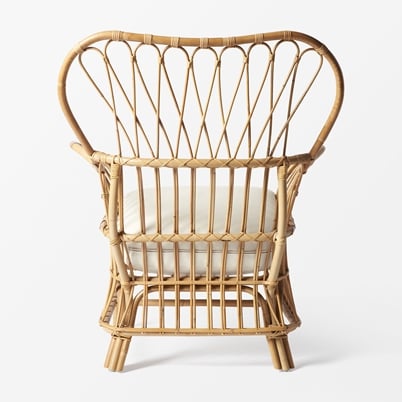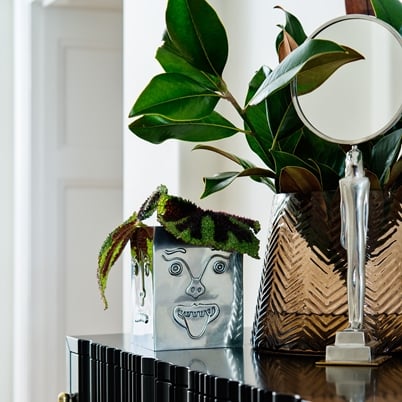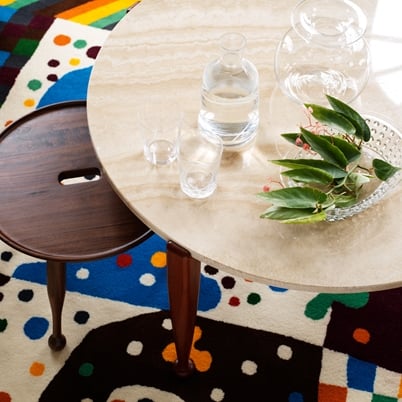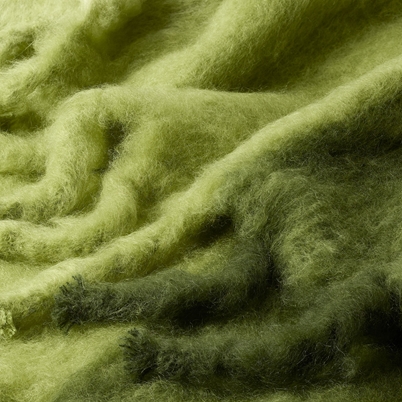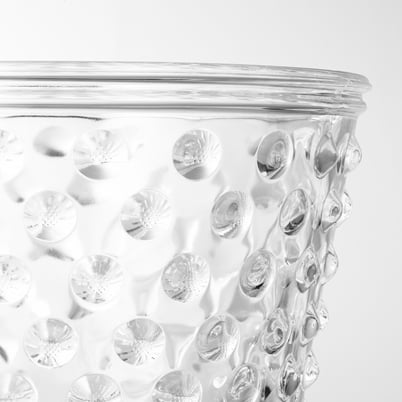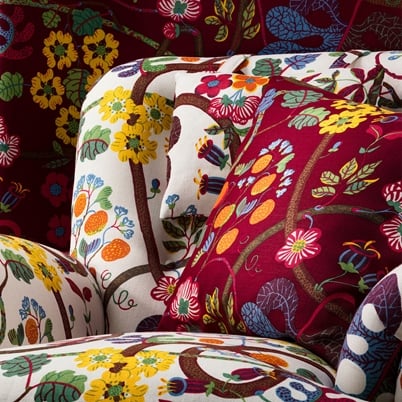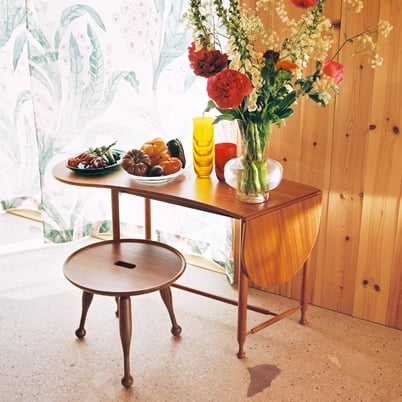Josef Frank’s Sofa table 965, with its mahogany frame and top in granite or travertine, holds more of the designer’s typical hallmarks. In addition to the meeting of different natural materials are the tapered legs and rounded feet, details so often repeated in his tables as well as seating – as in the classic 2156 mahogany stool, which was inspired by the 1700s English style.
The stool is small, compact and light and can therefore be easily moved to different places in the home. The round seat has an opening that can be grasped, which together with the raised table edging makes it possible to use the stool as a side table as well – a fine example of how small furniture can make a big difference.
Even the Nr 2 carpet, designed by Josef Frank, includes a broad blend of different elements. It is made according to his philosophy that carpets should show a real, preferably decorated surface, that gives a feeling of solid ground under your feet. Josef Frank’s carpets often had abstract motifs, since he resented the fact that one should walk upon flowers and animals.
STOOL 2156












